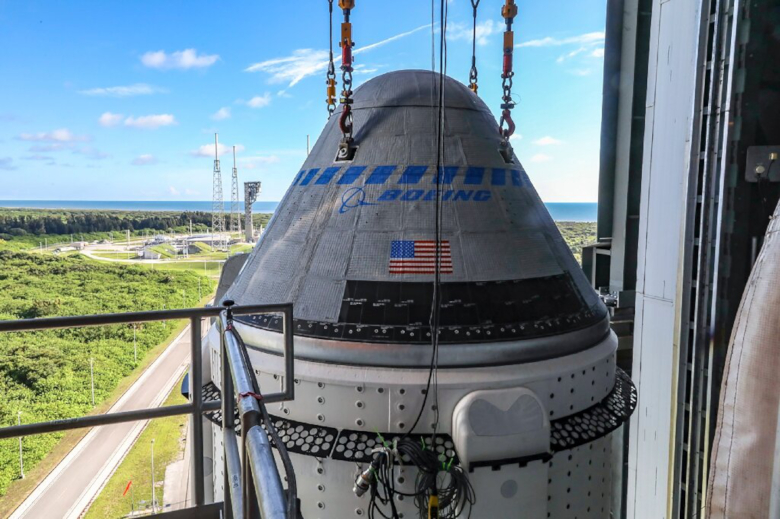During a live update on the status of Boeing's CST-100 Starliner spacecraft yesterday, officials at the company confirmed that the next launch attempt of its second uncrewed Orbital Flight Test (OFT-2) will not happen until sometime in the first half of 2022.
The CST-100 had been scheduled to fly to the International Space Station (ISS) early August, but the flight was aborted just hours before launch due to an "unexpected valve" problem discovered after an electrical storm.
Boeing later confirmed that a number of Starliner oxidiser valves had failed to open, an issue that according to Boeing yesterday, was likely the result of moisture or condensation contact with the valves.
Speaking with reporters Michelle Parker, Boeing Vice President and Chief Engineer, Space and Launch, said that at some point during the 46-day period when Starliner was fuelled, normal environment humidity must have entered the spacecraft, which in turn interacted with the oxidiser to create nitric acid. Nitric acid then damaged the Teflon seals and corroded the valves, said Parker.
Despite knowing that oxidiser will permeate through Teflon, the two are still used together as they are compatible.
Normally, if this phenomena occurs it does so after 60 days said John Vollmer, Boeing Vice President and Program Manager for Commercial Crew. Because only 46 days had elapsed, there was no expectation of a problem and nothing had been flagged up with the propulsion system during three prior tests, Vollmer added.
How was moisture allowed in? Although the vehicle is designed to operate in Florida's humidity, Parker said there is a small vent hole where the condensation might have seeped in. Steps to understand the problem and to mitigate against similar incidences are now being assessed.
When asked by reporters of a potential launch date for OFT-2 Vollmer replied, the “first half of 2022”. If that flight is successful, "we would look at CFT (crewed flight test) maybe by the end of the year," Vollmer said.
"We like to see six months in between flights," he said.
With Starliner out of action, NASA has had to turn to SpaceX to ferry its astronauts to the International Space Station instead.
Nicole Mann and John Cassada who were both scheduled to fly on the first two crewed Starliner flights, CFT and Starliner-1, have now been reassigned to the agency’s SpaceX Crew-5 mission that is slated for launch “no earlier than the fall of 2022.”
“NASA decided it was important to make these reassignments to allow Boeing time to complete the development of Starliner while continuing plans for astronauts to gain spaceflight experience for the future needs of the agency’s missions,” the US space agency said.
The duo and their crewmates will join an expedition crew aboard station for a long duration stay “to conduct science activities for the benefit of humanity and exploration”, say NASA.











